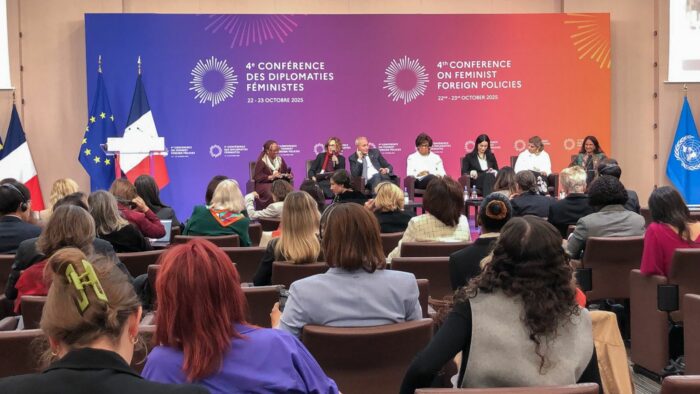The Progressive Post
Gender pay gap: The venom is in the tail(s)
The persistent gender pay gap is increasingly difficult to explain. In the past, it was mostly due to women’s lower educational qualifications and shorter work experience. Today however, only about a third of the gap is due to women working in lower paid occupations or sectors. As knowledge is empowering, the EC’s European Gender Equality Strategy 2020-2025 aims for pay transparency as a tool for tackling the pay gap. To address all cross-cutting pay inequalities however, the Gender Equality Strategy would do well to focus on four current issues on the European agenda: decent wage floors, working time, the predictability of working time, and public procurement.
Major societal changes have transformed the role of women in Europe since the establishment of our welfare states. When the European Coal and Steel Community was established in 1952, female labour force participation was between twenty-five and forty per cent in most European countries. In my own country, the Netherlands, about 25% of women were employed, and married women reported spending an average 70 hours per week on housework. Marriage bans in the public sector were still in place (they were abolished in 1955). In 2020, women outperform men in education and have doubled or tripled their labour force participation. Women work more, more hours and more years. Today, we can see women lead governments, public institutions and firms, even if those who do are still the exception.
Women’s lives and roles have undergone a major transformation since the establishment of European political cooperation (and certainly vastly outpaced behavioural adaptations observed in men during the same time period). These changes occurred largely without abandoning care responsibilities. Nor were they accompanied by equal rewards in the labour market. In fact, motherhood is now one of the largest impediments to women’s job retention, wage growth and promotions.
True, legislation has brought entitlements to equality in nearly all areas of life and most EU-Member States have invested in childcare institutions.
However, labour markets still uphold male standards. In her seminal book Divided Devotions, Mary Blair-Loy famously explains how our beliefs that committed workers work around the clock clashes with the constant availability expected of a good mother. Forms of work that negate the male good worker standard, like reduced hours or performing tasks associated with care giving (professionally or at home), are invariably associated with lower pay, promotions, and prestige.
Reflecting women’s advancements in the world of paid work, scholars have acknowledged that the persistent gender pay gap is increasingly difficult to explain. Where older research would show that women’s lower pay was primarily due to their lower educational qualifications and shorter work experience, this is less true today. Using the 2014 Structure of Earnings Survey, which surveys establishments in the EU Member States, Eurostat estimated the existence of an unexplained pay gap of 11.5% and an explained pay gap of 5.1% (adding up to a 16.6% pay gap): only about a third of the gender pay gap is due to women working in lower paid occupations or sectors.
European Commissioner Helena Dalli issued a communication on the 2020-2025 gender equality strategy which appears to be aimed at addressing that reality. In the area of employment, it spearheads two initiatives: a legislative proposal on binding measures on pay transparency by the end of 2020 and a re-launch of the 2012 proposal for gender balance on corporate boards.
Pay transparency and gender pay gaps
In the press conference presenting the European Gender Equality Strategy 2020-2025, Commissioner Dalli described the yet undefined binding pay transparency instrument as a first step towards tackling the gender pay gap. She suggests that knowing the size of the gender pay gap in firms, will lead to actions that bring about reductions of its size. In this regard, the Commission follows the lead of countries like Iceland, France and the UK, who have come to the same conclusion. UK firms with over 250 employees have already had to submit six different measures of their gender pay gap to be published on the public Gender Pay Gap Service site, with smaller employers expected to follow suit in the coming years. France requires firms to submit (preferably bipartite) gender equality action plans annually. The much talked-off Icelandic law from 2018 addresses pay equity (equal pay for comparable work) by requiring all firms employing over 25 workers to get certificates from expert auditors to prove their pay management systems are in accordance with ISO standards for equal pay for work of equal value.
By necessity, pay transparency focuses on gender pay gaps within firms: firms report on their own pay practice, are (potentially) held accountable for how they reward their own employees, and are blamed and shamed for failing their female employees when they underperform. There are good reasons to focus on firms, particularly with a view on effectiveness. Legally, companies can be required to pay women and men the same wages when they perform the same (equal pay) or equivalent (pay equity) jobs or tasks within the same (mother) company at the same level of experience. This makes well-implemented pay transparency measures a potentially powerful tool, if largely dependent on employers’ cooperation.
Pay transparency, however, also has a number of limitations, which are solidly within the realm of the public policy. First, firms aren’t prevented from hiring primarily female secretaries and male managers and are within their rights to pay the managers more than the secretaries. Second, pay transparency cannot fix the fact that our societies pay engineers more than teachers and notaries more than nurses. Since few enterprises employ workers covering such broad occupational groups, this kind of pay inequity is addressed on the level of the labour market as a whole. Third, much of the overall gender pay gap is found between firms: women and men who work in the same occupations can still have jobs for different employers in the same or different sectors, one of which may pay higher than the other.
Finally, research into the gender pay gap increasingly focuses on its tails, where the gap is largest. Hence women in low-wage occupations and those at the top, experience relatively larger disadvantage compared to their male peers than those in the middle. To be truly intersectional, as the strategy claims to strive for, actions towards closing the gender pay gap must target hurdles faced by low-wage workers as well as high-paid professionals. To address these cross-cutting pay inequalities, the Gender Equality Strategy would do well to make full use of the equality task force it aims to establish. Especially, I would suggest focussing on four current issues on the European agenda: decent wage floors, working time, the predictability of working time, and public procurement. Al these issues have the potential to help both male and female workers, but can be expected to benefit the latter more, thus potentially contributing to the closing of the gender pay gap.
Minimum wages and decent wage floors
The von der Leyen Commission has promised to deliver a proposal on the establishment of a fair minimum wage or wage floors for all workers in the Union. This pledge is critical, as women are significantly overrepresented at the bottom of the wage distribution. In a recent article, a team of researchers shows that the introduction of a national minimum wage in Ireland in 2000 increased the wages of 17% of female workers and closed the country’s gender pay gap among lowest paid workers. Increasing wages of the lowest paid workers not only addresses the wage gap where it is relatively large, it also has the potential to alleviate poverty and is in line with broader aims to decrease income inequality in our societies. What is more, if the strategy is successful in its aim to close gender gaps in employment participation, the greater inclusion of low educated women in the labour market is actually likely to increase the gender pay gap unless steps are taken to address income inequality more broadly.
Working hours
A second field the task force on equality should concern itself with are developments in working time. A recent article in the Harvard Business Review describes how professional workers in the (admittedly more extreme) US context are penalised for not working ever more extreme hours in terms of career progression; top management positions were reserved to employees who ascribed to the “70 hour week lifestyle”. In a recent complaint to the labour inspection, scientific personnel at Dutch universities indicated structurally working between 12 and 15 hours per week more than stipulated in their contracts. While the Working Time Directive clearly requires that workers who refuse to work over 48 hours per week (in member states where that is even allowed) should not be negatively affected, refusals to partake in structural overtime do affect career progression, especially for professionals. While refusing the previous European Parliament’s call to revise the working time directive, the Juncker commission did acknowledge flaws in implementation were to be addressed. This Commission should ensure that connections to the gender pay gap are included in any further action.
Transparent and predictable working conditions
Working time also affects the bottom of the wage distribution, especially as regards its predictability. The 2019 Directive on transparent and predictable working conditions does not include any references to gender, parenthood, or wage gaps. Nevertheless, it is extremely relevant for precarious workers, many of whom are parents and have to plan both their paid and unpaid work schedules. Crucially, article 33 provides that workers should have the possibility to refuse a work assignment if it falls outside of the reference hours and days or if they were not notified of the work assignment in accordance with the minimum notice period, without suffering adverse consequences for this refusal. EU member states will have to transpose the directive on transparent and predictable working conditions by 2022. This offers a window of opportunity to address the situation of low-paid women (and men), who are much more likely to work rotating shifts and fragmented part-time hours, which are detrimental to enrolling children in childcare.
Public procurement
Finally the European Gender Equality Strategy already mentions that “the Commission’s guidance on socially responsible public procurement will fight discrimination and promote gender equality in public tenders.” It should, however, go beyond that. Public procurement procedures go to the heart of the underpaid care sector, which is responsible for a large share of the gender pay gap. In its free market attempts to stimulate freedom of goods and services, the European Union has materially contributed to a race to the bottom in public services. Public tenders exacerbate a focus on the cost of care services to municipal budgets (or tax payers) at the expense of quality and working condition. In the guidance on socially responsible public procurement, the task force on equality has a real opportunity to show its teeth and improve the wages and working conditions of a vulnerable group of women and migrant workers.
Photo credit: EC Audiovisual service
On 4th of March, Helena Dalli, European Commissioner for Equality, visited the Brussels Centre for the prevention of domestic violence to discuss how to deal with gender-based violence.





